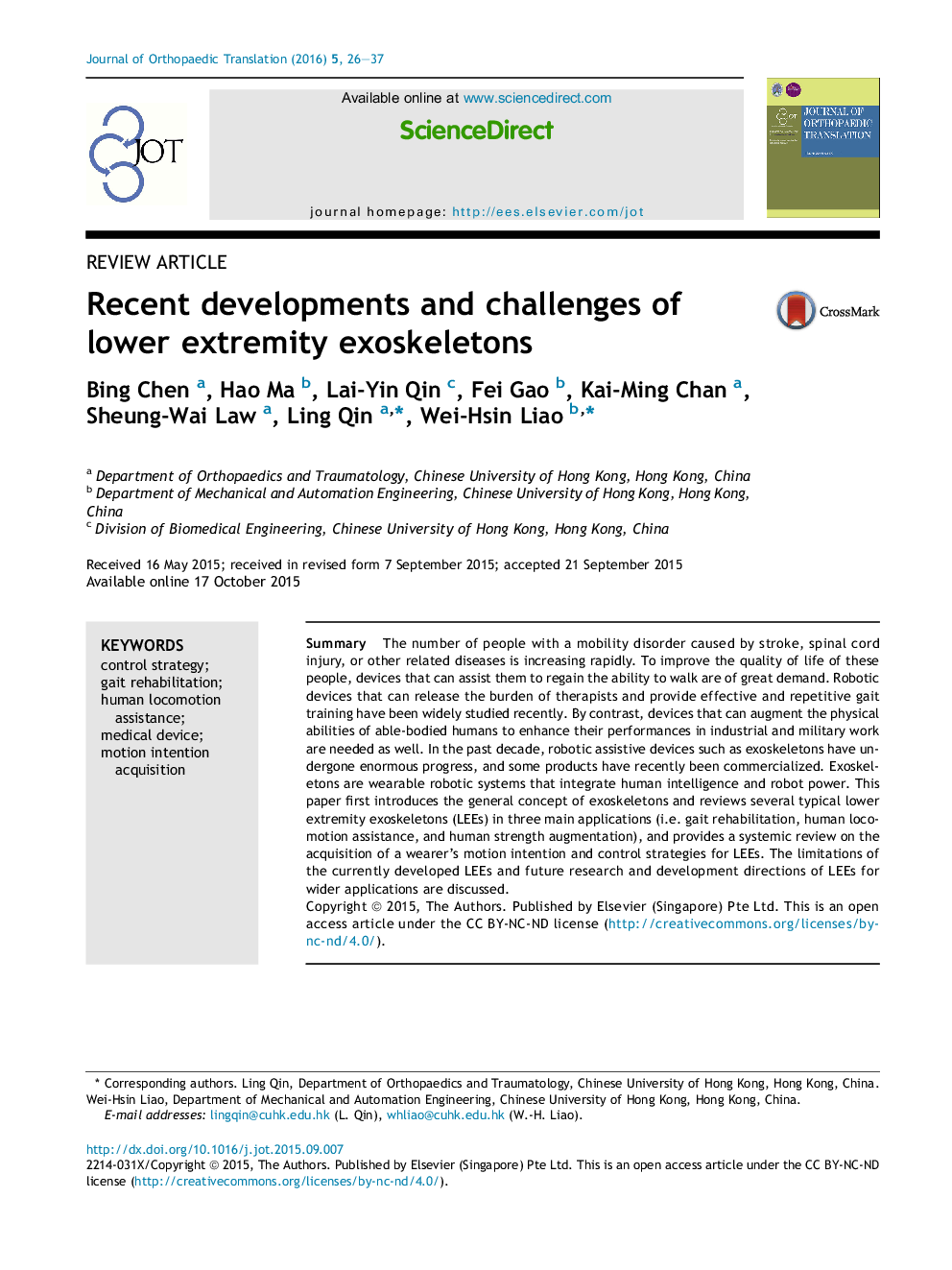| کد مقاله | کد نشریه | سال انتشار | مقاله انگلیسی | نسخه تمام متن |
|---|---|---|---|---|
| 2739885 | 1567073 | 2016 | 12 صفحه PDF | دانلود رایگان |
SummaryThe number of people with a mobility disorder caused by stroke, spinal cord injury, or other related diseases is increasing rapidly. To improve the quality of life of these people, devices that can assist them to regain the ability to walk are of great demand. Robotic devices that can release the burden of therapists and provide effective and repetitive gait training have been widely studied recently. By contrast, devices that can augment the physical abilities of able-bodied humans to enhance their performances in industrial and military work are needed as well. In the past decade, robotic assistive devices such as exoskeletons have undergone enormous progress, and some products have recently been commercialized. Exoskeletons are wearable robotic systems that integrate human intelligence and robot power. This paper first introduces the general concept of exoskeletons and reviews several typical lower extremity exoskeletons (LEEs) in three main applications (i.e. gait rehabilitation, human locomotion assistance, and human strength augmentation), and provides a systemic review on the acquisition of a wearer's motion intention and control strategies for LEEs. The limitations of the currently developed LEEs and future research and development directions of LEEs for wider applications are discussed.
Journal: Journal of Orthopaedic Translation - Volume 5, April 2016, Pages 26–37
